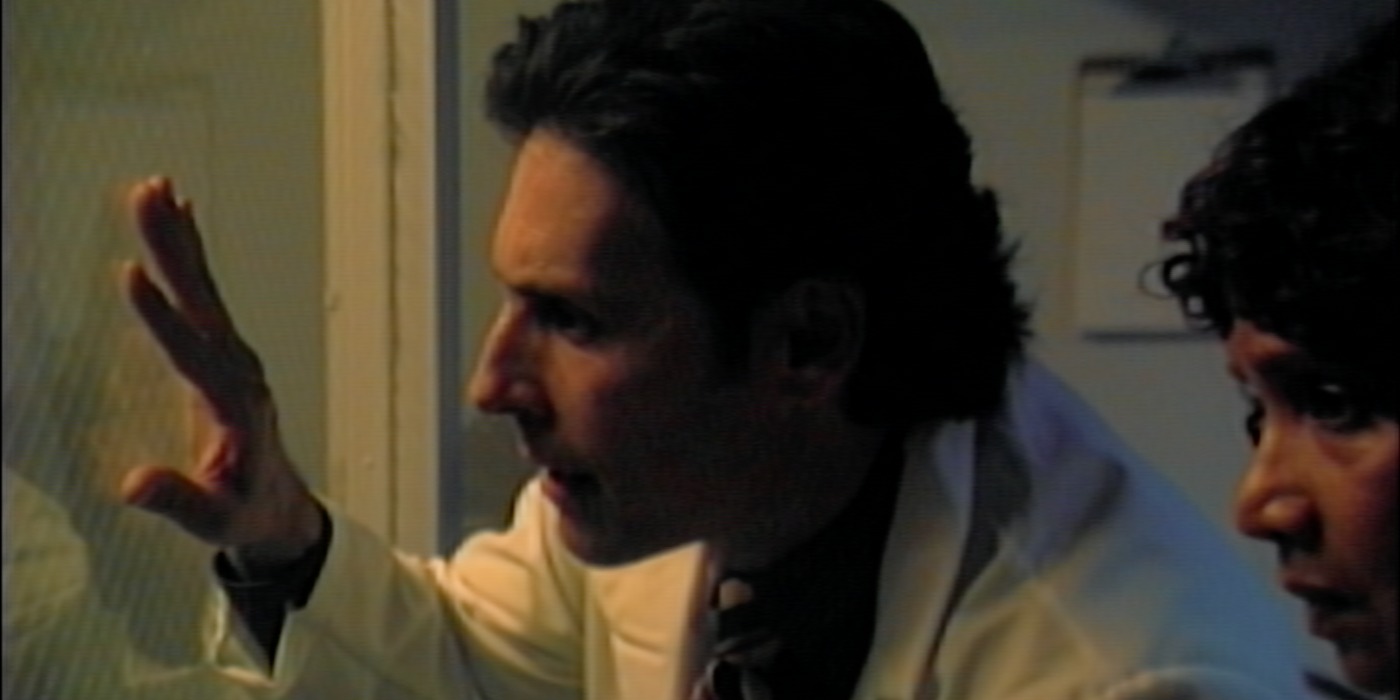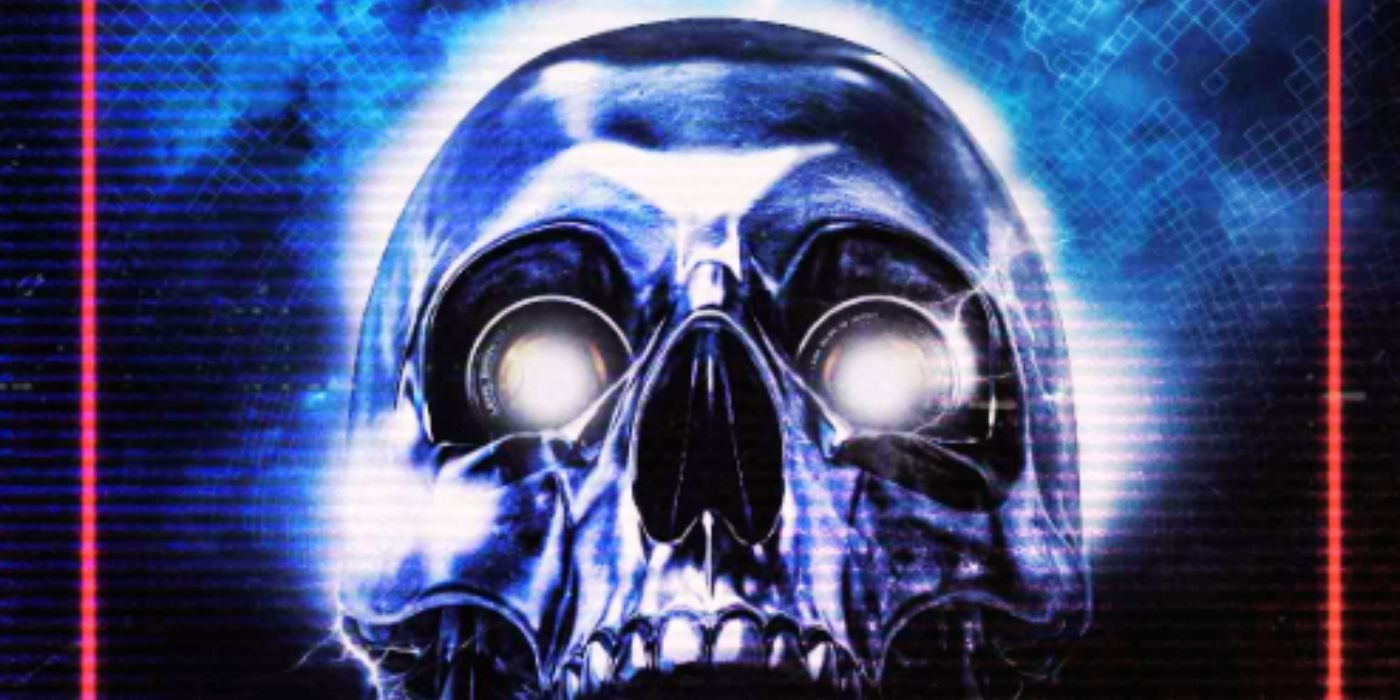Rather than sticking to a familiar structure, V/H/S/85 presents a new angle for the anthology by giving filmmakers the freedom to experiment more than usual. The film’s premiere at Fantastic Fest in September before dropping exclusively on Shudder on October 6 brought depth and cohesion.
These attributes are not usually seen in earlier entries. This sixth part connects its disturbing segments through shared themes like greed, the clash between past and present systems, and a heavy 1980s atmosphere.

Six short films are included, each with its unique approach, though some proved more effective than others in delivering the intended experience.
Who Is Responsible for the Murders in “No Wake / Ambrosia?”
Rather than beginning quietly, “No Wake” kicks off like a familiar horror tale of a fun getaway turning deadly. A group of seven friends take a trip that goes wrong when an unknown sniper starts picking them off while four of them are water skiing on Lake Evic.
Gunfire cuts through their joy, and as expected from the found footage style, everything turns frantic and messy. One by one, they appear to die brutally. But staying true to the franchise’s approach, things don’t stop there.
The four who died in the lake later came back to life, their bodies grotesquely mangled but somehow reanimated. Returning to camp, they find the remaining three friends truly dead, still in the tent.
The scene suggests the lake’s water had strange properties hinted at earlier by decaying signs — it brings people back to life, no matter how damaged they are. The short ends with the undead group seeking justice for their fallen friends.
Later on, the events from “No Wake” are revisited in a segment titled “Ambrosia.” Here, a well-to-do family hosts a disturbing celebration. Ruth (Evie Blair), who appears sweet at first, announces proudly that she has completed an important family ritual — and recorded it.
As the VHS tape plays, viewers realise the lake and camp from “No Wake” were part of her act, and she was the sniper. Her family tradition requires the killing of seven people instead of hosting a conventional coming-of-age event, and the chant “Hail Seven” adds an eerie cult-like element.
While the family is still praising Ruth’s actions, police raid the home, likely alerted by the lake survivors. Though heavily armed and determined to defend themselves, the family eventually falls.
However, Ruth comes back to life, affected by the same strange power from the lake — a child had earlier sprayed her with lake water using a toy gun. Though she later tries to end her life, she fails and is arrested. This gives the revenge-seekers a sense of closure.
Mike P. Nelson directed this segment, and he brings the same themes he touched on in Wrong Turn (2021) and The Domestics (2018). The short creates space for him to raise questions about gun culture and how family pressure can manipulate personal choices.
“God of Death”: Who Is Mictlantecuhtli?
Rather than easing into its plot, “God of Death” opens in the middle of disaster, with a Mexican news team covering an earthquake live before the building collapses. All except Luis (Ari Gallegos), the cameraman, die.
A rescue team eventually pulls him from the wreckage, but they cannot go back up due to the destruction, so they head downward instead. As they descend, they pass through fiery ruins until they come upon a hidden underground temple covered with ancient markings and skulls.
One of the rescuers recognises the space as part of Mictlan, the underworld in Aztec beliefs. Suddenly, he becomes possessed, recites phrases about Mictlan’s rise, and violently stabs himself in what appears to be a ritual. He then turns on another team member.
Luis and Karla (Florencia Rios) attempt to escape, but a terrifying godly figure rises, kills the possessed man, and knocks Luis unconscious. Eventually, Karla returns and kills Luis by removing his heart in another ritual.
According to Aztec tradition, Mictlantecuhtli is the lord of the underworld, and the temple reflects this history. Karla uses words like “Ixpuztec,” “Nextepehua,” and “Tzontemoc,” which all relate to the same deity. The temple also houses a structure similar to the Tzompantli, where human skulls were displayed.
At the end, director Gigi Saul Guerrero appears in character as a news anchor reporting on the disaster, while leaving the supernatural truth unmentioned.
This suggests that modern society is blind to ancient knowledge and rituals that still linger beneath the surface, drowned out by a culture focused more on consumer goods and modern living.
“TKNOGD”: Could a Techno-God Be Real?
Unlike the other segments that draw from mythology, “TKNOGD” pushes toward a different kind of question about belief systems.
Natasha Kermani presents a powerful short where Ada, played by Chivonne Michelle, takes the spotlight as she criticises the audience for abandoning traditional beliefs and embracing a technological replacement. She shows them an old clip by a creator known as “The Inventor,” who made a basic form of virtual reality.
Ada then wears the device to challenge the idea of a techno-deity. Inside the virtual space, she finds it empty at first, but her taunts eventually summon a violent force that destroys her both in the virtual world and physically.
Her body is left mangled while the onlookers, shocked and excited, clap. When her headset is removed, her eyes appear robotic and unnatural. Even though this short is brief, its meaning can stretch in multiple directions.
On one hand, it suggests that trying to force answers out of unknown forces can lead to destruction. On the other hand, it points to a society that no longer knows how to separate real life from digital illusions. The crowd may applaud because they can’t tell the difference anymore.
Some might interpret the story as a warning — we’ve allowed technology to take the place of spiritual systems, and in doing so, we’ve created something uncontrollable.
The segment also questions how institutional religion has sometimes adopted fear-based methods to keep followers, similar to how digital platforms use manipulation to maintain attention and loyalty.
Who Commits the Crimes in “Dreamkill?”
Instead of following a linear police story, “Dreamkill” introduces a strange case where Detective Wayne (Freddy Rodriguez) receives VHS tapes showing future murders days before they happen.

On the third occasion, he traces the source of the tapes and discovers it’s Gunther (Dashiell Derrickson), son of his forensic colleague Bobby (James Ransone). Gunther explains that his dreams, captured by a new camera, are predicting real events.
This links cleverly to The Black Phone, another film by Scott Derrickson, where a character has similar dream-related powers. Trusting Gunther and Bobby’s claims, Wayne tries to intervene before the next crime, but he checks Bobby’s record and finds out he had been dismissed earlier for inappropriate behaviour with the victims.
Despite this discovery, Wayne goes to confront him without backup, which leads to his death. Bobby kills him and returns to continue his spree. Gunther, having already dreamt this, takes steps to protect himself and eventually shoots his father.
It’s left uncertain whether these events are still part of a dream or have already occurred, but the style hints that it could be another vision. The segment uses this mix of reality and dreams to reflect how those in authority, like police officers, often escape accountability.
Bobby misused his badge, and only someone like Gunther, who isn’t tied to material systems, could stop him. It’s a nod to how traditional justice systems can fail when those within them act without consequences.
What Happens to the Scientists in “Total Copy?”
Instead of being just another standalone story, David Bruckner’s “Total Copy” acts as the central thread connecting the other parts of V/H/S/85. In this short, Dr. Spratling (Jordan Belfi) leads a scientific team that captures and studies a strange lifeform they name Rory.
Over a long period, they expose Rory to human culture through television to see if it can mimic human behaviour. Eventually, Rory begins to respond and copies the image of a team member who had never been seen in the room, implying Rory could see through the one-way glass.
This development frightens some researchers into quitting, leaving only a few scientists behind. As time passes, Rory becomes more advanced and starts mimicking language and behaviour more accurately. The experiment slowly takes a darker turn, with Rory adopting more dangerous and intelligent traits.
At one point, he imitates Dr. Spratling and tries to break containment, leading to a violent confrontation. The segment, using vintage documentary-style footage, touches on how institutions try to control what they don’t fully understand, only to lose control when those subjects gain awareness.
Rory, like some kind of metaphor for oppressed or misunderstood beings, becomes smarter and harder to contain the more he learns. This echoes throughout the film, once again raising questions about authority, manipulation, and the hidden cost of pushing boundaries too far.



